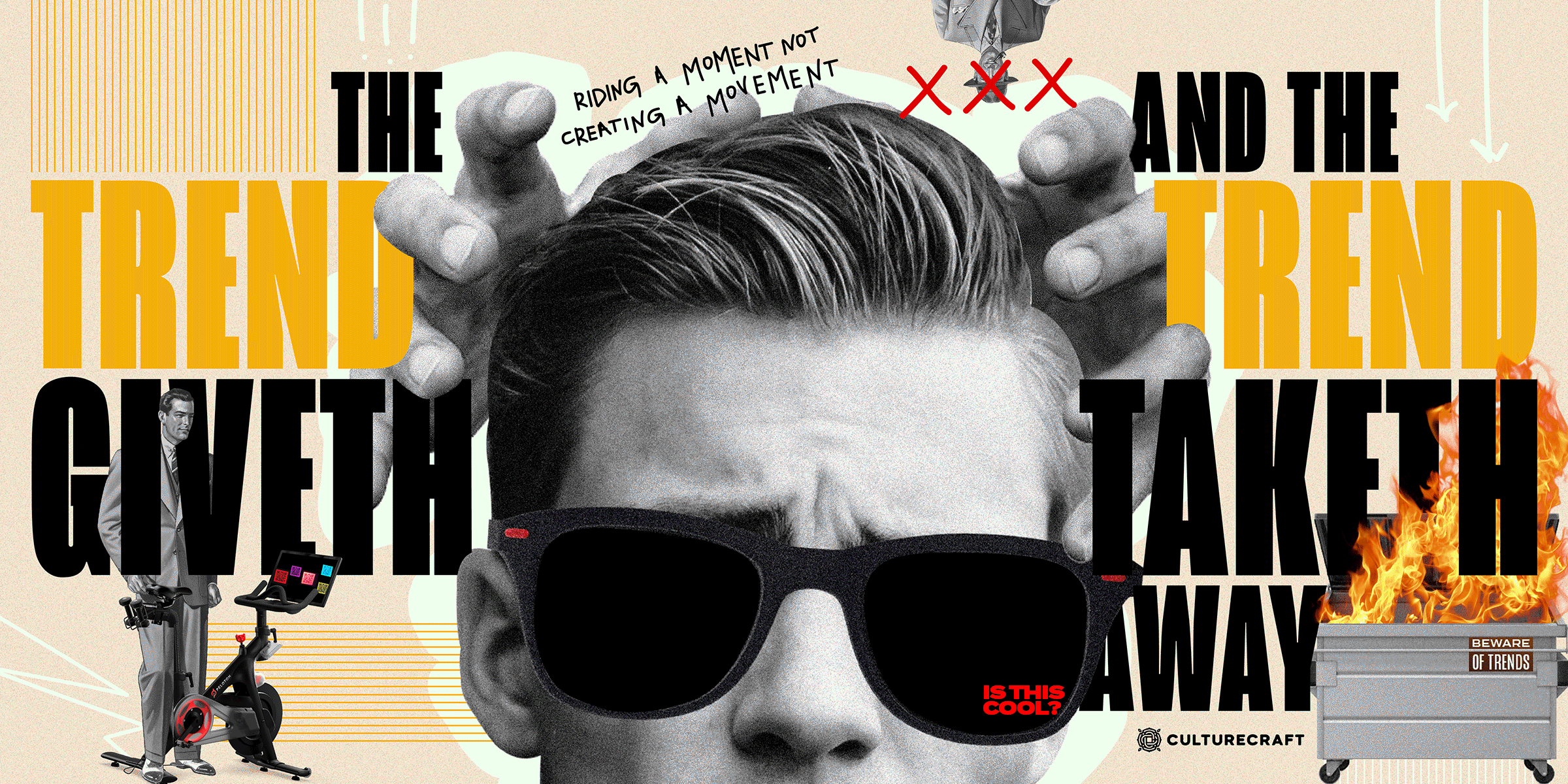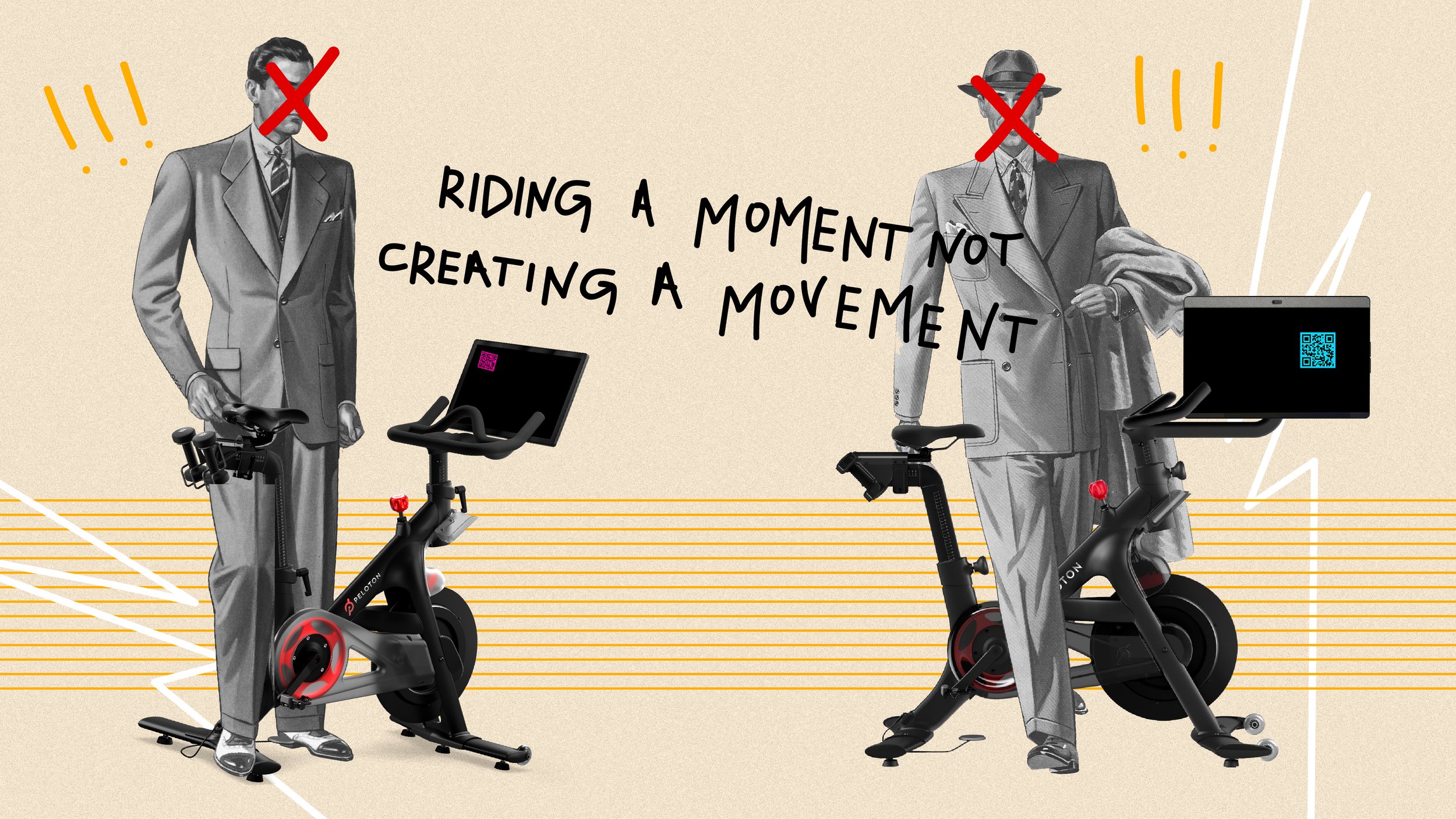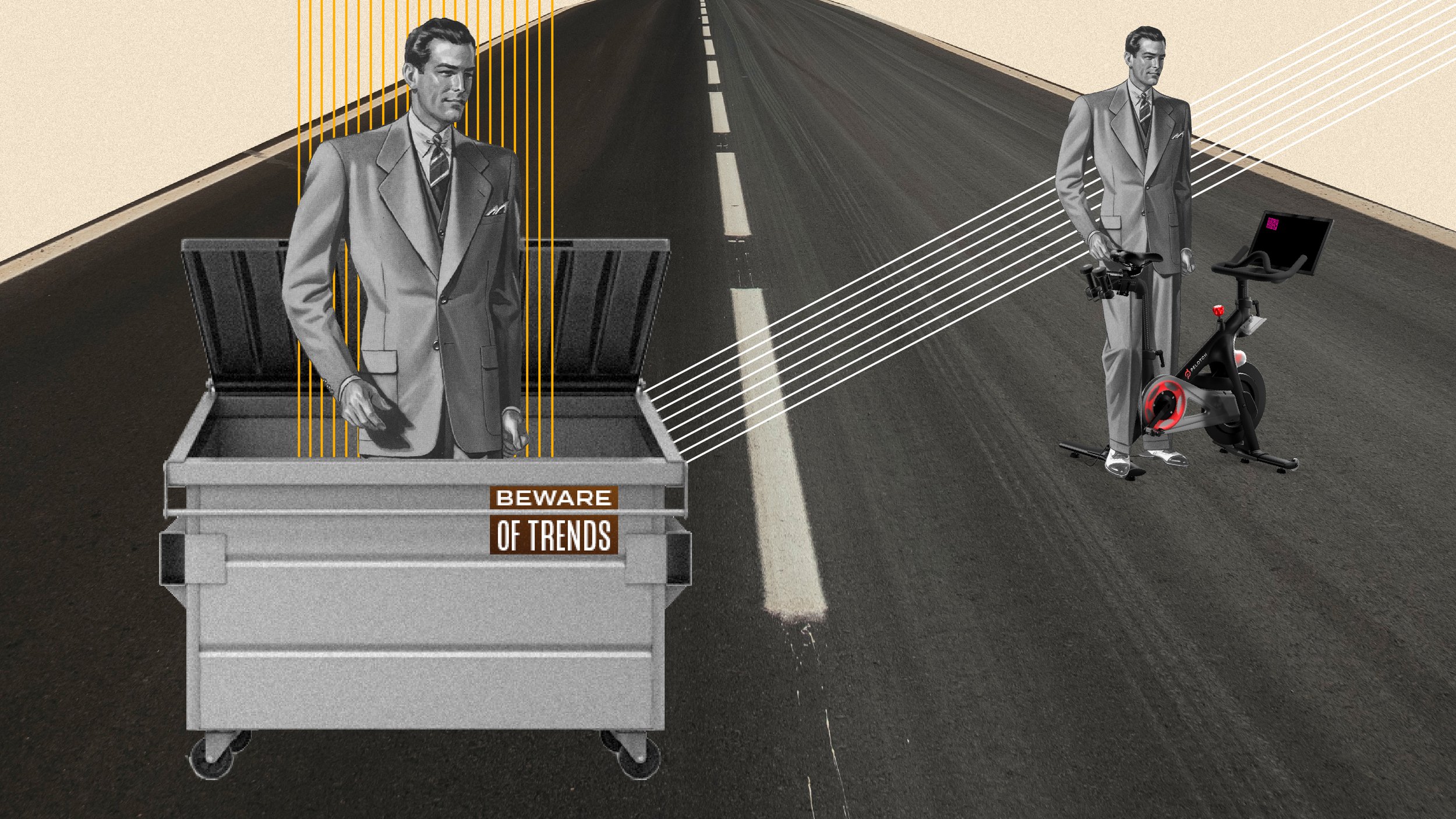3 Reasons Brands Shouldn’t Chase Trends, and 1 Thing They Can Learn From Them
I once worked for a roofing company whose yearly revenue, and thus existence, depended on summer hailstorms (many roofing companies do the same). There was just one problem.
Hail is not a guarantee. It’s a seasonal phenomenon. Sometimes it happens, but most of the time it doesn’t. From this meteorological game of chance I learned an important lesson:
When you bet the business on something unpredictable and out of your control, you have to be ready to lose the bet and the business.
When it comes to brands, trend-chasing is rampant. Whether it’s trying to tailor messaging to a hot social topic, finding a popular fad to integrate into products, or adopting a new piece of technology to boost marketing, there are a myriad of ways that brands look for and rely on trends.
But just like hail, there are no guarantees in trend chasing and the world of business is uncertain enough.
As you might have guessed, we’re looking at trends for this week’s volume of MADE. And you should know now, we’re going to try and discourage you, you thoughtful business leader you, from making them a cornerstone of your strategies.
Because a trend isn’t a strategy, it’s a prayer for hail.
As fate would have it, a trending topic provided us the perfect starting point for this conversation.
You Don’t Know What You Got Till It’s…
Peloton exploded onto the scene in 2014, having spent the previous two years in startup mode, raising money and momentum through investors and a highly successful Kickstarter campaign. From the beginning, its approach was to do one thing (high-end studio cycling at home) and do it so much better than anyone had ever attempted it, that there would be no competition.
They succeeded in every way imaginable. By the end 2019, their market cap was around $8 billion, topping off five years of compounding financial growth. They were a cultural sensation, launching many of their “coaches” into stardom, and generating an intense customer loyalty and community.
The best way to sum up Peloton’s appeal would be like this: Our founder Nick Richtsmeier tells a story about one of his sons coming up from the basement after a Peloton workout, forehead beaded in sweat, t-shirt soaked through. As he gets to the top of the stairs he’s greeted by his mom:
“Which workout did you do?”
“I did the one with ______”
“Oh man, I did that one too. So good, right? _________ is the best coach!”
And on it went. Co-workers, friends, strangers on the street. If you rode Peloton, you had something more than a workout in common.
That was all before 2020, when the world moved inside because of COVID, and Peloton’s popularity skyrocketed again. They saw a 456% growth in market cap during 2020, jumping from $8 billion to $45 billion. Here’s former Field Operations Specialist Alonso Loera explaining the post-COVID Peloton experience, “It was just a nonstop flow of order fulfillment. Every one of our delivery vans was pretty much filled to the brim.”
Peloton wasn’t chasing a trend. They were the trend. But enamored with their own meteoric rise, they began to overlook the real reason for it: their customer experience. They had fallen in love and served such a specific community, but misunderstood what that community had loved about them in return (their content, not their contraption). The final misunderstood nail slammed into the coffin when then they began to try and capitalize on what they believed was the trend: the access to a high end machine at home instead of going to the gym.
They made a treadmill. A bad one, as it turned out. But this one shift, from being the trend to trying to capitalize on the trend, became their rapid undoing. As former CEO John Foley explains, “…we scaled our operations too rapidly and we over invested in certain areas of our business.”
When he says “scaled too rapidly” and “over invested” he means the defective treadmill they fast-tracked. He means the of pandemic-induced revenue they were chasing. He means the cultural buzz they tried to capitalize on.
He means the trend.
Just for comparison, Zoom, another company which the pandemic catapulted into main-stream success, also had massive growth over 2020, growing their market cap over 400%. But unlike Peloton, they’ve remained well above their 2019 numbers, due largely to their focus on continuing to deliver an ever-bettering product to their customers, without diluting their brand with trend-chasing.
The Problems With Trends
There are lots of issues with trend-chasing when it comes to any brand, not the least of which is that all trends end. Baked into the whole idea of a trend is the limited lifetime it possesses, and multiple factors deciding how long or short that lifetime turns out to be.
But moving beyond that, here are three quick reasons why basing your brand’s marketing\product\messaging\strategy on a trend is a bad idea.
-
Trend Chasing Is Distracting: Let’s start with spotlights: chasing trends focuses effort on the temporary, to the detriment of the long-term and the permanent. If we’re chasing or utilizing a trend, especially one that we hope garners customer attention, it’s probably because there’s another part of the brand, even an integral part, that needs fixing. The longer we put the fix off, the higher the cost on the back end in dollars and reputation. When rust was discovered on Peloton’s bikes, and documents showed they had hid the issue from customers, Peloton’s already fragile public image took another hit in the spokes, as did its valuation.
-
Trend Chasing Relies On Others: While brands should look to others to be inspired, trend chasing seeks to replicate and reproduce what someone else has already made successful or popular. That kind of copy and paste mentality usually hurts one specific person: the customer. Our version of someone else’s idea is still based in something that never took our customer into account. Flawed from the start.
-
Trend Chasing Puts The Strategy Out Of Your Control: Just like weather phenomenon are a bad bet for sustainability, relying on a trend puts your strategy’s all-important control in the hands of something over which you have almost no control. When Sex In The City killed off a main character with a Peloton bike, Peloton sought to regain control of the trend and cash in on the exposure by getting the same actor to be in a Peloton ad. When that actor was hit a few days later with sexual allegations, Peloton lost all control of the narrative and, once again, ended up damaging their reputation. A brand strategy, any brand strategy, that relies on a trend for success, has set you up for abject failure. To borrow from Queen, “Get on your bikes and ride” away.
What’s A Trend Good For?
Before you toss out your Tik-Tok feeds and crypto news alerts, trends do help brands in at least one way that we want to discuss quickly.
The most important challenge for all brands is getting to know their customers, and developing an affection and care for them and their needs. Trends can be a helpful peek into the minds of customers, alerting brands to what customers are caring about\thinking about and offering some insight into their world.
What’s important here is realizing that the valuable information is not what your customers are saying about the trend, but what the trend is saying about your customers. Understanding how a trend appeals to your customers will yield far greater information than simply trying to replicate the trend.
Not sure how to get the most out of trends or even what the trends are and what they’re saying about your customers?



